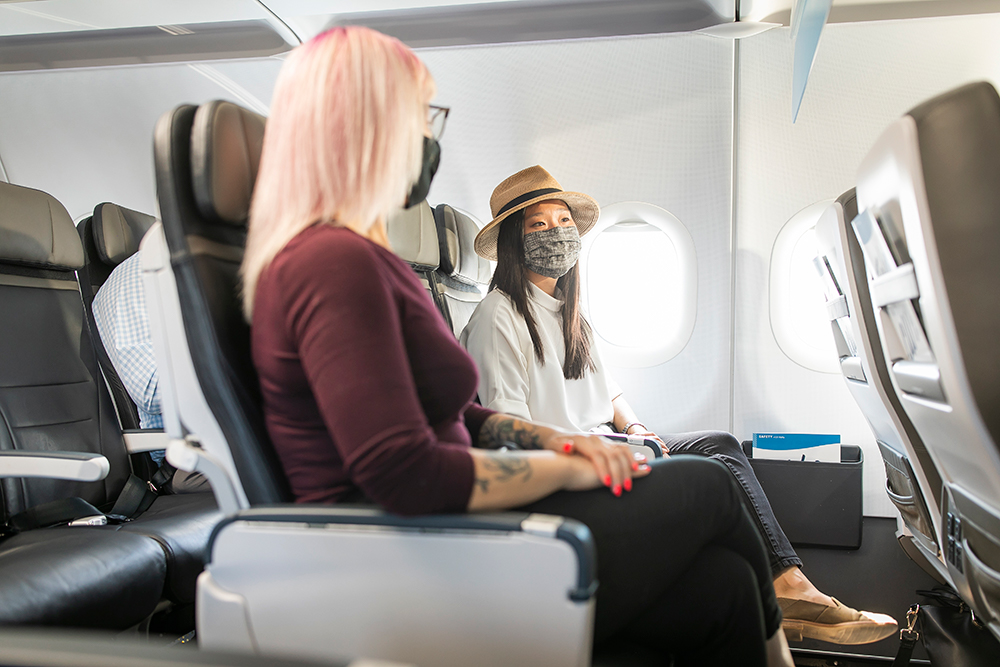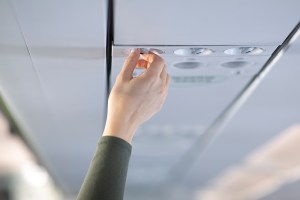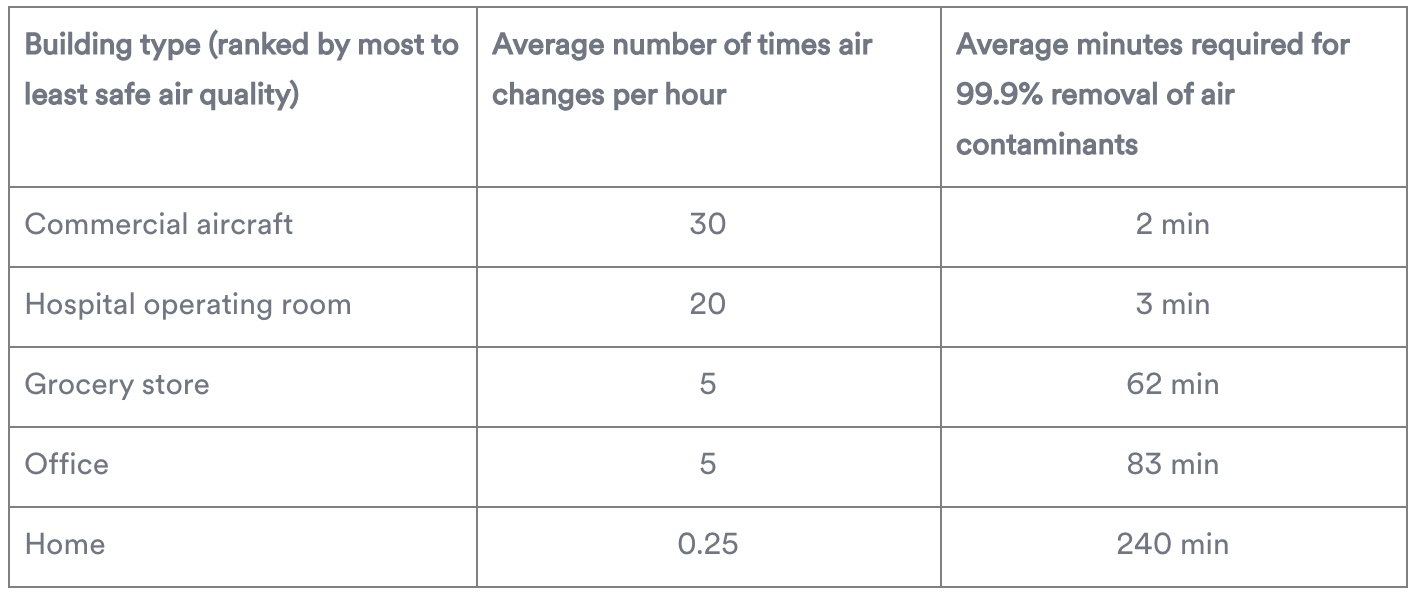Breathe easy on your next flight with fresh, clean air on Alaska Airlines
Share

The air you breathe on Alaska Airlines flights is probably cleaner than the air you’re breathing right now. Surprised? Just keep reading.
Most flyers tend to think of an airplane as a closed environment with recirculated air. Not true! And that misconception has led to a lot of anxiety among flyers during the COVID-19 pandemic, so we’re here to set the record straight.

Our aircraft recirculates fresh air from outside and through hospital-grade HEPA filters every 2 to 3 minutes. The filters onboard also remove 99.9% of airborne contaminants.
Recent findings from researchers at Harvard even showed the average age of clean air onboard is 1.8 minutes. For context, the average age of the air in a hospital room is 16 minutes, and 240 minutes at home.
Related: Experts say airplanes are among the safest indoor environments in the world
And that’s just the beginning. In the mere couple of minutes air is onboard, it goes through numerous steps to keep you safe and healthy.
How does it work? Let’s go with the flow:
Step 1: Fresh outside air comes in
During your flight, fresh air is continuously pulled into the plane from outside, completely refreshing the air onboard every few minutes. This system was initially created back in the days when smoking on planes was common. Since then, it has evolved into a powerful system for keeping the air you breathe germ-free.
Step 2: Clean air flows from the top down
After fresh air comes onboard, it takes the most direct route to your seat, entering the cabin through vents in the ceiling, before getting pulled back out of the cabin through the vents by your toes.
This flow may seem like a minor detail, but it’s actually clever engineering. Because air flows top down, rather than traveling the length of the plane, the air you breathe only comes in contact with your immediate surroundings, keeping you in your very own travel bubble. This constant flow of air is a big part of why researchers at the Harvard T.H. Chan School of Public Health concluded recently that flying can be safer than eating at a restaurant or shopping in a grocery store (pg 3, 5, 7).
 Data from Table 4.3 Comparison of Clean Air Ventilation Rates for Various Space Types Expressed in Air Change Rates per Hour and Average Age of Air, HSPH-APHI-Phase-One-Report pg 76.
Data from Table 4.3 Comparison of Clean Air Ventilation Rates for Various Space Types Expressed in Air Change Rates per Hour and Average Age of Air, HSPH-APHI-Phase-One-Report pg 76.
Step 3: Hospital-grade filters stop germs in their tracks
After flowing from the ceiling to the floor, air from the cabin is pulled through two HEPA filters in the belly of the plane. These filters use the same technology hospitals and laboratories rely on to stop the spread of pathogens, removing 99.9% of airborne contaminants.

Step 4: Mixing it up
Once air travels through the HEPA filter, it gets mixed 50/50 with fresh air from outside and flows back through the cabin. There is a full exchange of cabin air with outside and HEPA-filtered air every 2-3 minutes and 100% fresh air every 6 minutes.
All of these steps working together, along with mandatory masks, make it nearly impossible to contract COVID-19 when flying. In fact, research by the Department of Defense concluded that even if you were sitting right next to someone that has COVID-19 on your flight, it would take at least 54 hours to be exposed to an infectious dose.

So, if you’re on the fence about flying sometime soon, rest assured that you can breathe easy on your next flight. It’s all part of our Next-Level Care, which includes 100+ layers of safety to prevent the spread of COVID-19, including mandatory masks, enhanced cleanings between flights, electrostatic disinfectant spray and more.

Throw in finishing touches like complementary lavender-scented EO sanitizing wipes and contactless options to make your journey nearly touch-free, and you’ve got the recipe for a relaxing and safe flight.
We look forward to flying with you soon!
